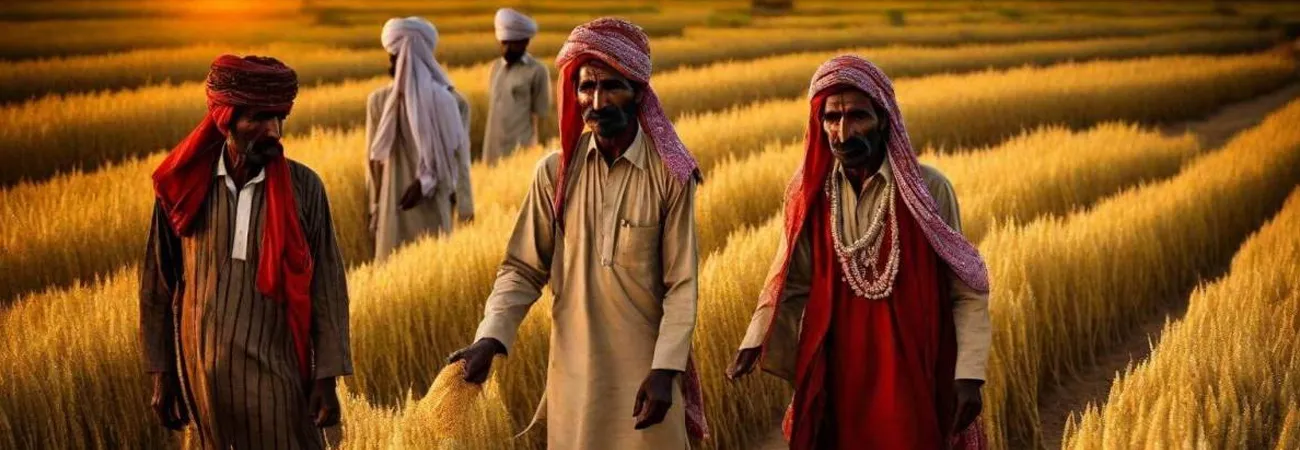i NEWS PAKISTAN
By Asifa Zehra
The world tends to view terrorism and nuclear war as the ultimate threats. National policies and budgets often prioritize these issues. However, in today's world, the real terror lies in environmental change. It's silently devastating countries around the globe. From 1998 to 2017, climate change caused an estimated 526,000 deaths and $3.47 trillion in losses. This "seasonal terrorism" manifests as extreme weather events - storms, floods, heatwaves, droughts - wreaking havoc on vulnerable nations. Puerto Rico, Honduras, and Myanmar are just a few examples.The Earth's rising temperature fuels these destructive storms. The 2019 Global Climate Risk Index by German Watch highlights this by listing the most affected countries. Notably, developing nations dominate the top ten, with Haiti, the Philippines, and Pakistan ranking the worst. Climate change poses a horrible threat to humanity's existence through phenomena like droughts, desertification, and floods. This crisis directly impacts global food security by crippling agricultural productivity.
The current food system struggles to keep pace with a growing population, leaving over 821 million people undernourished and 1.85 billion lacking access to quality food, according to the Food and Agriculture Organization (FAO). Micronutrient deficiencies further aggravate this issue, affecting an additional billion people. Pakistan faces a particularly bleak picture. Climate-sensitive regions are failing to meet productivity targets due to deforestation, declining freshwater supplies, and ecosystem damage caused by extreme weather events. The worrying trend of converting agricultural land for non-farming purposes further jeopardizes future food production. These complex issues, fueled by climate change, contribute significantly to Pakistan's growing hunger crisis. The World Food Program (WFP) reports that global food insecurity is worsening, with 691 to 783 million people facing hunger in 2022. Pakistan ranks a concerning 102nd out of 125 nations on the 2023 Global Hunger Index (GHI).
More importantly, Climate change acts as a multiplier for Pakistan's food insecurity challenges. The country ranks among the top ten most vulnerable to climate stress according to the 2021 Global Climate Risk Index. Erratic weather patterns have severely impacted water resources, which are further strained by mismanagement. Despite ranking third globally in terms of acute water shortage, with per capita water availability dropping from 1,500 cubic meters in 2009 to 908 cubic meters in 2021 (as highlighted in the National Security Policy document 2022-26), water resource development remains a low priority for the government. While Pakistan ranks 8th globally in wheat production and imports wheat to meet its needs, wheat is the main staple food in Pakistan. Consumption is around 125 kilograms per head per year — one of the highest in the world. Wheat and wheat-based products account for 60-70% of total calories consumed, and climate change threatens this food security.
Pakistan is facing a significant challenge in feeding its growing population, with 43% experiencing food insecurity and 18% facing acute food shortages, according to the WFP. Unpredictable weather patterns negatively impact agricultural productivity, particularly for climate-sensitive crops, leading to food shortages and rising prices for staple crops. Climate change is projected to cause an 8-10% drop in agricultural productivity by 2040, with wheat and rice crops experiencing steeper declines. This has led to a 44% increase in essential food item prices, as reported by the Pakistan Bureau of Statistics. The agricultural sector, which is a critical source of food and employment for nearly 40% of the population, is being disrupted by unpredictable rainfall patterns, droughts, floods, and rising temperatures. These factors have significantly impacted staple crops like wheat, rice, and cotton, with the 2022 monsoon season causing extensive damage.
Rising temperatures create ideal conditions for pests and diseases, further damaging crops and disrupting natural outbreak patterns. This, coupled with reduced agricultural output due to climate factors, has led to a significant rise in food prices, exacerbating food insecurity for low-income communities. Nearly 12 million people are projected to face acute food insecurity in the near future, highlighting the urgent need for immediate and long-term solutions. "It is pertinent to mention that for decades, India and Pakistan have been locked in conflict. However, a new threat looms larger - climate change. Both countries are suffering devastating floods and face a future of water food insecurity and water shortage. Pakistan is the only country outside the poles which has the highest number of glaciers, totaling 7253.
These glaciers are located between China, India, and Pakistan, known as Siachen, where the armies of Pakistan and India are stationed with war equipment. The increase in melting of glaciers and GLOF incidents is causing havoc in Gilgit-Baltistan. It is necessary that both countries call back their respective armies and declare Siachen as a no-army zone. Instead of the election campaign's heated statements, the self-proclaimed biggest democracy should announce regional cooperation for the looming food crisis and prove itself a true democratic country." This is a wake-up call for regional collaboration as well. War has brought nothing but hardship. Instead, India, Pakistan, and other South Asian nations must prioritize a united front against climate change.
To address this crisis, Pakistan must prioritize climate-resilient agricultural practices, such as drought-resistant crops and water-saving irrigation. Additionally, investing in early warning systems and improved storage facilities can help mitigate the impact of extreme weather events. Moreover, Pakistan needs to learn how China became the largest producer of wheat in the world in two decades. On a regional level, South Asian nations must come together to address climate change. Collaborative efforts can range from knowledge sharing on sustainable agriculture to pressuring world powers for stricter environmental regulations. By prioritizing regional cooperation over conflict, South Asia can build resilience and ensure a food-secure future for its citizens.
Credit: Independent News Pakistan









